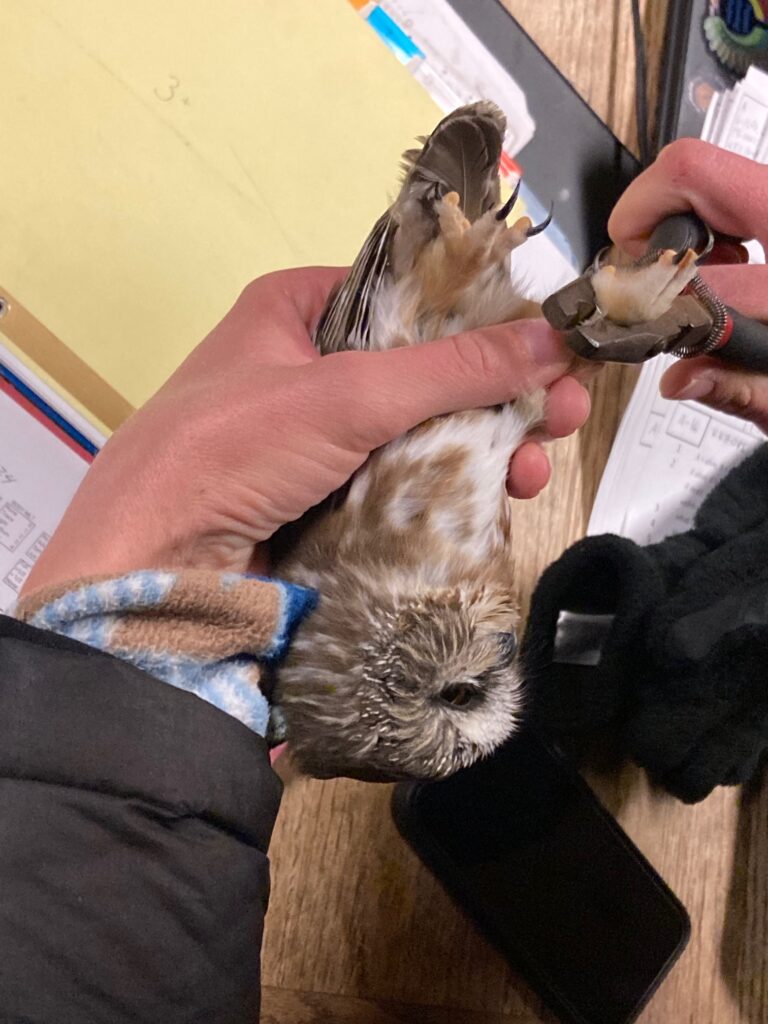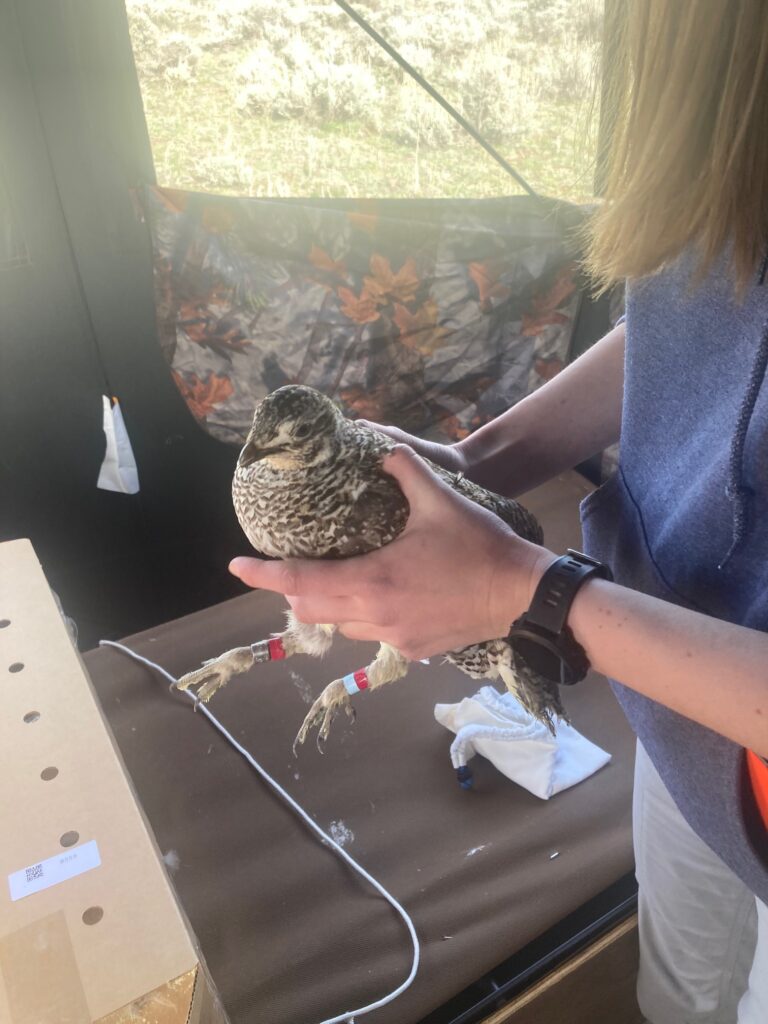Our final week banding at the Straits ended on a dour note. Winter weather is starting to set in and we were either closed or had reduced hours every night this week due to high winds and rain. It was ultimately decided to end our season early due to the inclement weather making conditions unsuitable for trapping. Our final banding night was November 6th and we closed the banding station on the 8th; the original closing date was the 10th. Only two northern saw-whet owls (NSWOs) were captured this week, the lowest weekly total for the season. Our final total of 340 NSWOs caught for the season consisted of 221 females (65%), 59 males (17.4%), and 60 categorized as unknown (17.6%).

For our final weekly topic we want to discuss background information about bird banding and why it is such an important tool for the research, conservation, and management of birds, as it was a commonly asked question from many of our visitors this season. Bird banding in the U.S. is managed through the Bird Banding Laboratory (BBL). Based in Maryland, this program is part of the U.S. Geological Survey (USGS) which is within the Department of the Interior. Researchers and managers must obtain federal permits from the BBL, along with associated state permits, in order to have authorization to capture and band migratory birds. Non-migratory species, such as wild turkeys, do not require the federal permit but need a state permit. The lead bander is referred to as a master bander who can allow others to band and train under their permit. Banding data from all banding stations and projects are submitted to the BBL which creates a nationwide database.

Most bands, but not all, often contain a nine-digit number that is unique to each individual band and the hope is that birds will later be recaptured sometime after they are banded and released, though only a relatively small percentage are actually recaught. Regardless, this mark-recapture method is a much more cost-effective and widespread technique compared to deploying transmitters due to how cheap the bands are to produce. Three common bands include the standard butt-end band used on most birds, lock-on bands for larger hawks and owls which are capable of prying open the butt-end type, and rivet bands that are closed using a rivet gun and used on larger birds such as eagles and turkeys. There are also colored bands made of plastic.

Banding is a major research vessel for multiple types of data, without which most conservation and management programs for birds would become more difficult or unfeasible. Data on age, sex, and different morphometric or body measurements are collected while a bird is handled for banding and this information provides insight into the demographics, morphological structure, and general health of populations. Information on a bird’s movements can be obtained when they are recaptured elsewhere from their original capture location. Over time, this improves understanding of dispersal and migration which helps identify breeding, wintering, and migratory areas.

Recapturing banded birds also helps with determining their life span or how long birds live, which results in vital longevity records for different species. Plastic color bands are readable from a distance using either binoculars or spotting scopes, allowing birds with these bands to be identified without having to be recaptured. These bands are often used in studies concerned with behavior and social structure, especially involving territories and reproduction. In conjunction with various surveys, banding can be used to estimate population size, survival rates, and productivity depending on the ratios of marked and unmarked birds, how many are recaught, and numbers of juveniles compared to adults captured.

Capturing birds for banding also allows for biological samples to be collected that can be used to monitor disease prevalence within populations, such as avian influenza, as well as genetic testing. While not relevant for owls and other non-game species, banding is very important for managing populations of game birds, particularly waterfowl. Data on survival and productivity for different demographics, along with harvest rates, are used by federal and state managers to adjust hunting regulations, including length of seasons, methods of take, and seasonal and daily bag limits. This helps keep the hunting tradition alive, while still ensuring both ecologically and socially sustainable game bird populations across the country.

This overview on the importance of banding was sourced from the USGS BBL website (https://www.usgs.gov/labs/bird-banding-laboratory). This integrated program is essential for the effective research, conservation, and management of birds nationwide and would not be possible without the hundreds of banding stations and projects across the country, including ours at the Straits. Having this structure to safely band and study birds to support continuing their existence for both present and future generations is a gift that should not be taken for granted and one we should always appreciate.
Season Numbers:
Total: 348, NSWO: 340, BDOW: 6, LEOW: 2
Jake and Josiah
